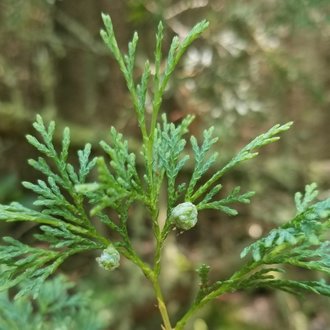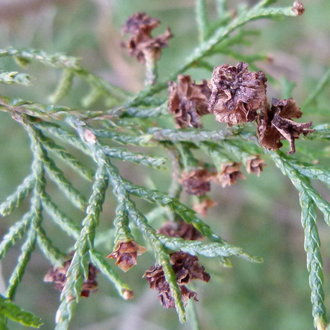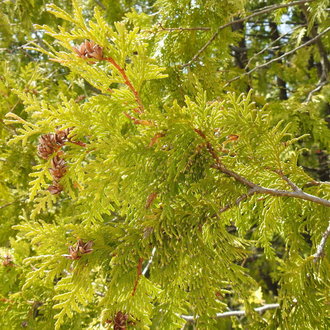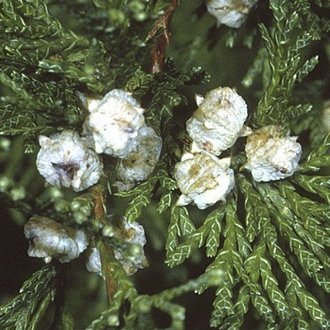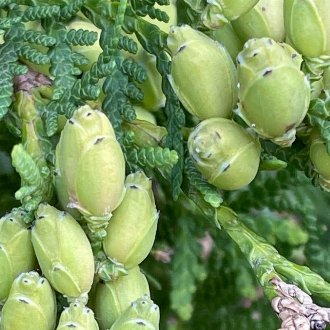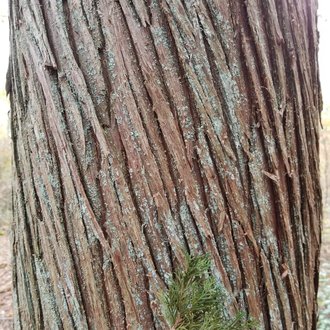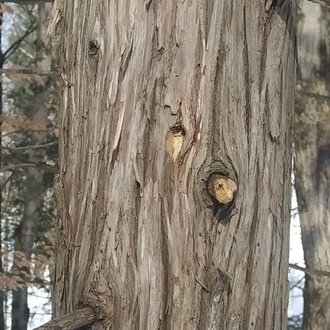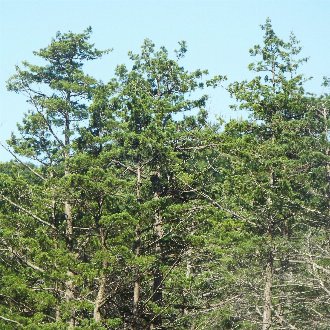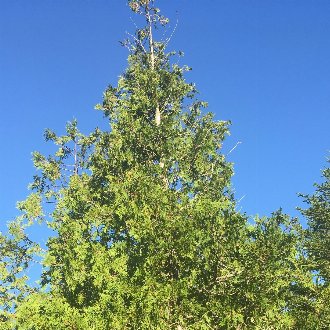Atlantic White Cedar vs Northern White-Cedar
These two species only overlap in the wild in a small part of New England, but both are widely planted in landscaping. Both have scale-like foliage and seed cones releasing wind-dispersed seeds. They can be told apart by their foliage arrangement, density, and color, seed cones, and shape. Some trees can be distinguished by bark. Both prefer moist conditions, but Atlantic white cedar is more restricted to wetlands. The two species have no overlap in soil pH, with Atlantic white cedar limited to sites with acidic soils (pH <5.5), whereas Northern White Cedar is most likely on more calcium-rich soils (pH > 5.5.)
Atlantic White Cedar (Chamaecyparis thyoides) | Northern White-Cedar (Thuja occidentalis) |
An evergreen conifer native to acidic, sandy wetlands of the Atlantic and Gulf coasts. | A slow-growing, medium-sized coniferous tree of the northeast, found on moist sites and those with neutral to alkaline pH. |
Foliage is finer, more rounded around the twig, and branches more irregularly. Photo © Kevin Keegan, Public Domain. | Foliage is thicker, strongly flattened, and branches more, in a highly-regular pattern. Photo © Quinten Wiegersma, CC BY 4.0. |
Foliage ranges from green to bluish. Photo © botanygirl, CC BY 4.0. | Foliage is often yellowish, especially when growing in sun. Photo © Alexis Godin, CC BY 4.0. |
Unripe seed cones greenish but covered in pale whitish coating, more stout, spherical, and lumpy, with scales not as clearly visible. Photo © Robert H. Mohlenbrock, Public Domain. | Unripe seed cones are green, longer and narrower, with clearly-visible scales. Photo © Tom Scavo, CC BY 4.0. |
Bark averages more reddish; ridges tend to be narrower and often spiral around the trunk slightly. Photo © C. Ben Schwamb, CC BY 4.0. | Bark averages more grayish; ridges tend to be wider, and are more consistently oriented vertically. Photo © Wendelyn Bolles, CC BY 4.0. |
Foliage is sparser, letting through more light and being easier to see through when viewing a single tree from the side. Photo © Jonathan Layman, CC BY 4.0. | Foliage is much thicker and denser, letting through less light and harder to see through when viewing a single tree from the side. Photo © Jonathan Layman, CC BY 4.0. |
Additional Notes
The difference in foliage density reflects the fact that Thuja occidentalis is much more shade-tolerant.References & External Resources
These short lists show only links helpful for ID. For a complete list of references and resources also covering other aspects of ecology, visit the links section of the full article on each plant, which is the first entry here.



